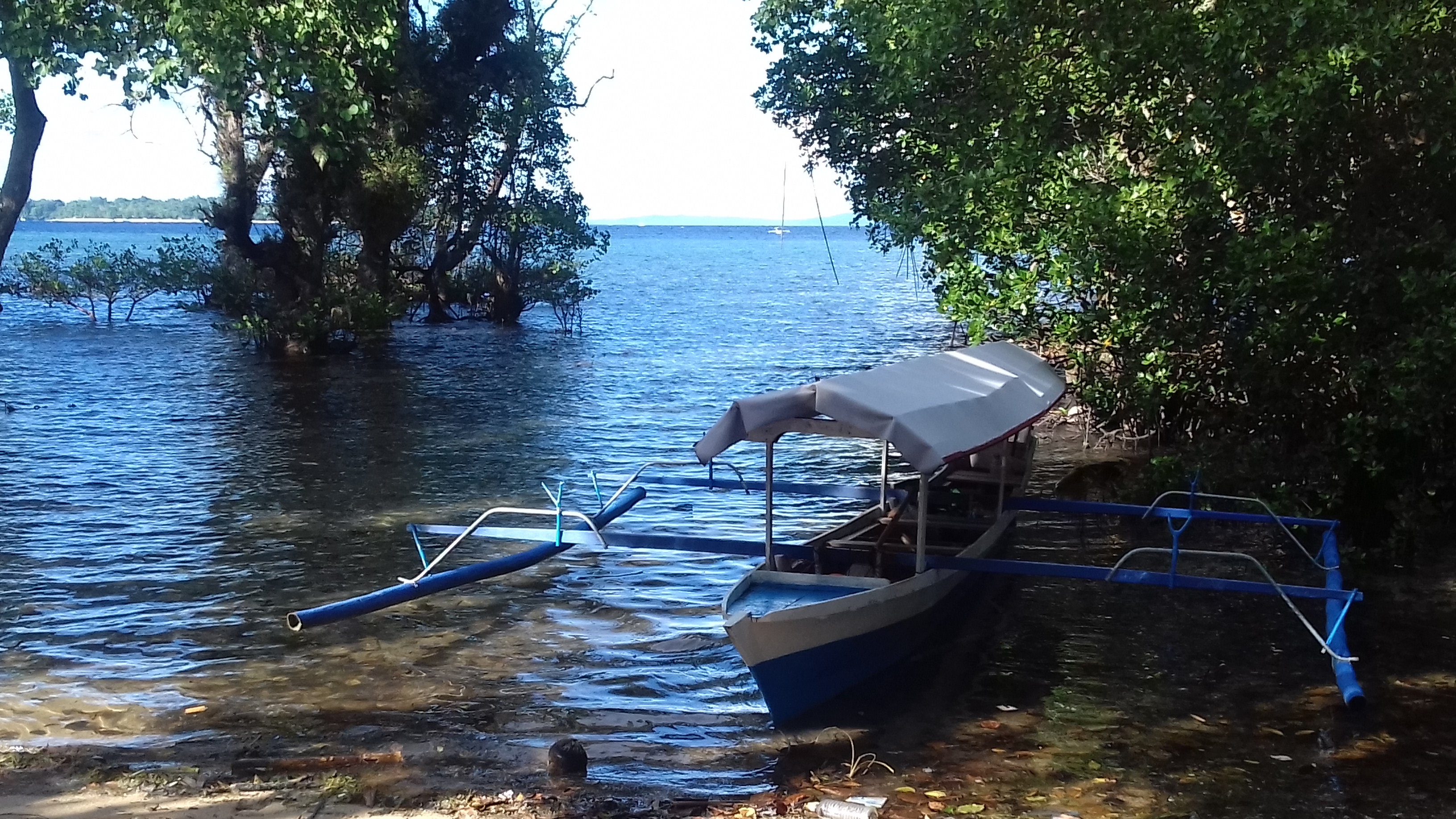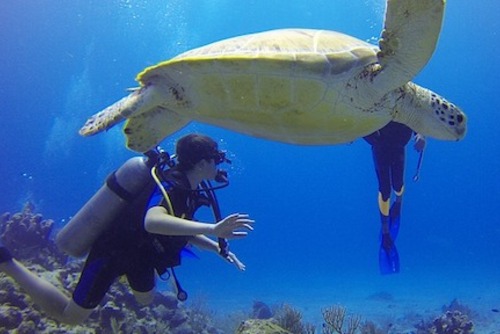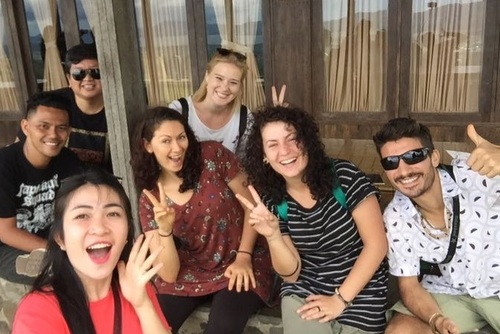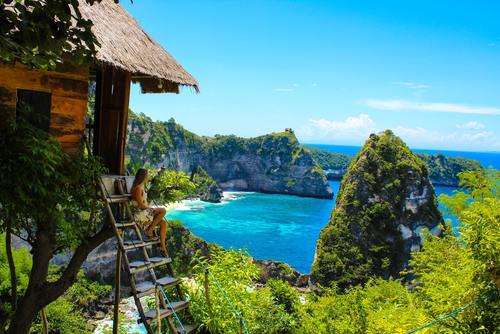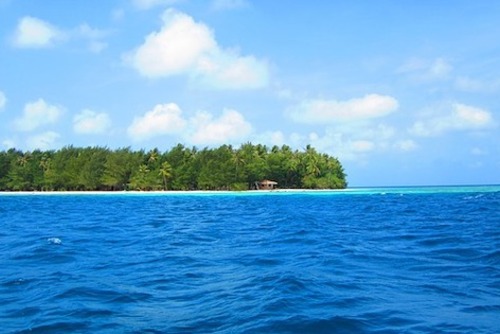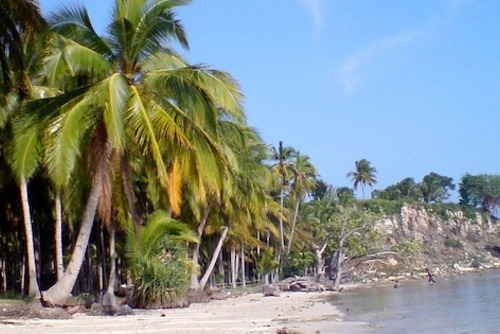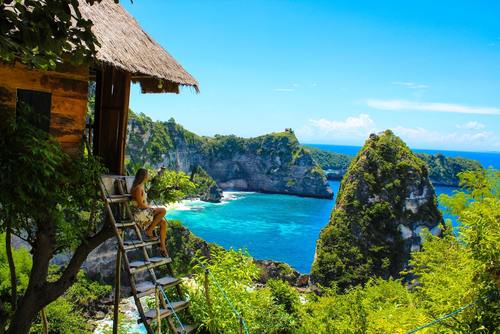From the biodiverse waters of Bunaken National Marine Park to Tomohon’s volcanic highspots as well as Tangkoko-Batuangas Dua Saudara Nature Reserve's diverse array of wildlife, those who visit will no doubt be welcomed with open arms as they traverse one of Southeast Asia’s most underrated regions.
Here is everything you need to know about visiting North Sulawesi, including the
Where is Sulawesi?
Sulawesi is the world’s 11th largest island and can be found to the north-east of Java and Bali.
How Do You Get to North Sulawesi?
The main transport hub is Manado, with the city’s Sam Ratulangir airport offering domestic and international connections. Gorontalo has also seen an increase in air traffic and can provide a useful link for travellers. Bitung acts as the seaport for Manado, with the Pelni ferry fleet stopping at ports along Sulawesi’s coastline.
Currency
The Rupiah. Expect to pay around 200,000R for a budget room, 20,000R for cheap street food, 2,500R for a bottle of water and 18,000R for a packet of cigarettes. Travel costs will vary depending on the destination with private transport being much more expensive than its public counterpart.
When to Go
Temperatures remain pleasant all year round with the driest months tending to be between July and October. The tourism high season extends from June to September and sees accommodation prices rise significantly.
Useful Transport Information
Aside from walking, visitors will soon get used to other modes of transport in the region.
Ubiquitous blue mikrolet vans swarm around on their set routes while ojeks, the iconic Indonesian motorbike taxis, can be seen weaving in and out of traffic.
Horse-drawn bendi carts are another alternative. They stick to main routes and cost around 3,000R a trip. Manoeuvrability can be an issue, as can the rickety carts, but journeys are a sedate way to get from a to b.
Best Place for Diving & Snorkelling - Bunaken National Marine Park
Nestling in the Celebes Sea to the north of Sulawesi and famed for the biodiversity of its waters, Pulau Bunaken is one of the world’s foremost diving destinations.
The easy, unrelaxed pace of life makes it an ideal counterpoint to the hustle and bustle of nearby Manado, while its semi-remote location sees it attracts visitors keen to escape the more crowded waters of Bali and Thailand.
There are a great many underwater delights to be discovered. Sponge crabs and seahorses wind their ways amongst the beautiful corals, while barracudas, reef sharks, turtles, clams, rays and colourful sponges can also be found roaming the currents.
Bunaken offers around 20 diving spots with trips costing around $35 per dive. Although the park mostly caters to intermediate and advanced divers, PADI Open Water courses are also available for around $375, and there are numerous diving operations scattered around the park.
Snorkelling can typically be arranged at your resort, with rental of masks and fins costing about 60,000R for a couple of hours.
Accommodation can be found attached to Bunaken’s dive resorts, with homestays and guest houses also available. A four-person bungalow costs 200,000R in the low season (October to May), but expect to pay much more in the high season (June to September).
Visitors should be aware that Bunaken has a tropical climate, meaning the wet season from November to April brings frequent rain and greatly reduced underwater visibility.
Public boats for Bunaken leave daily from Manado’s Bersehati market at 2.00pm with a one-way ticket costing 50,000R. The return trip leaves at 8.30am. Transport can be arranged with your resort.
There are no ATMs on Bunaken so be sure to stock up on currency.
Best Place for Natural Wonders - Tomohon
Keen sightseers will find much to delight in around Tomohon’s surrounding highlands, with the twin volcanic peaks of Lokon-Empung forming a literal and metaphorical high point of a trip to the region.
Rising over the Tondano Plain and about an hour’s walk to the west of the city, visitors can expect a close encounter with some of Indonesia’s most active volcanoes and, on a clear day, panoramic views stretching as far as Manado to the north.
Allow for an early start – around 4.30am – to avoid climbing in the excessive midday heat.
Meanwhile, the ‘other’ major volcano in Tomohon, elongated Mahawu, allows for some fine views and birdwatchers in particular will feel at home in the surrounding vegetation.
Located to the east of the city, it can be trekked in about an hour but thanks to the steep, winding roads, transport is advisable.
Away from the volcanoes, Lake Linow exudes a calm and quiet atmosphere. What will truly stand out, though, is Linow’s water: the combination of sunlight and the lake’s sulphur pits causes the water to bleed through shades of green, blue and amber in a pleasingly photogenic fashion.
Tomohon is about an hour’s travel from Manado’s Karombasan terminal (bus 5,600R/private vehicle 150,000R) and Makassar, Pare-Pare, Toraja, Ampana, Gorontalo and Bitung are all reachable.
Best Place for Wildlife - Tangkoko-Batuangas Dua Saudara Nature Reserve
The rolling hills and coastal gardens of Tangkoko’s 8,700 hectares offer much to entice wildlife fans.
Driveable in two hours from Manado or one hour from Bitung, the nature reserve is most notable for its efforts in preventing many native animals unique to Northern Sulawesi, including the spectral tarsier, the world’s smallest primate, and the crested black macaque, from becoming extinct.
Tangkoko is also home to threatened species such as the cuscus, hornbill and maleo, as well as rare rainforest flora.
Guides are compulsory, with rangers charging 200,000R and 100,000R for morning and evening hikes respectively - keep in mind that the tarsiers only come out after dusk. Overnight stays in simple guesthouses (losmen) are also available and be sure to wear repellent, long sleeves and trousers for protection against insects.
By Tom Dunican
Related Pages

